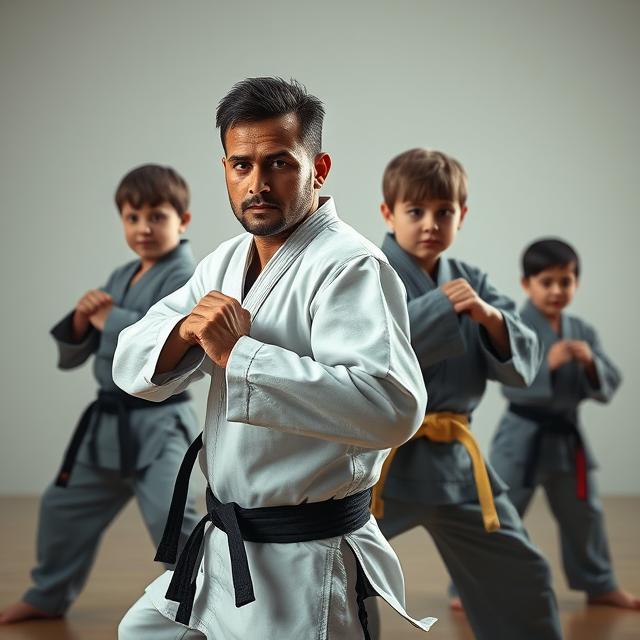An Exploration of Tradition, Philosophy, and Practice
Tang Soo Do, a Korean martial art, is a discipline steeped in history and tradition, blending elements of physical fitness, mental discipline, and spiritual growth. Known for its fluid movements, powerful techniques, and deeply rooted philosophical principles, Tang Soo Do appeals to practitioners seeking to cultivate both their bodies and minds. Whether one is drawn to it as a path to self-defence, a journey of personal development, or a competitive pursuit, Tang Soo Do offers a rich tapestry of experiences.
Historical Roots
Tang Soo Do traces its origins to ancient Korea, borrowing from indigenous fighting techniques such as Subak and Taekkyon, as well as Chinese martial arts. The name “Tang Soo Do” itself translates to “Way of the Chinese Hand,” reflecting the influence of Chinese martial traditions. This art flourished during the Three Kingdoms period (57 BCE–668 CE) and evolved further under the Goryeo and Joseon dynasties, becoming a cultural emblem of Korean identity.
The modern form of Tang Soo Do was formalized in the mid-20th century by Hwang Kee, often regarded as the father of Tang Soo Do. Hwang Kee incorporated elements of traditional Korean martial arts, Shotokan Karate, and Chinese Kung Fu to create a system that emphasizes agility, precision, and philosophical depth. He founded the Moo Duk Kwan school in 1945, which became one of the most influential institutions for the dissemination of Tang Soo Do.
Philosophy and Principles
At the heart of Tang Soo Do lies its philosophy—a commitment to personal growth, ethical living, and harmonious existence. Practitioners are encouraged to embody the “Five Codes of Tang Soo Do,” which serve as guiding principles for both their martial arts practice and daily lives:
- Loyalty to country: Upholding the values and culture of one’s homeland.
- Obedience to parents: Respecting family bonds and authority figures.
- Honour friendships: Cultivating trust and meaningful relationships.
- Build confidence and discipline: Striving for personal improvement and self-control.
- Never retreat in battle: Displaying courage and resilience in the face of adversity.
These principles cultivate a mindset that transcends physical techniques, nurturing an individual’s character, respect for others, and inner peace.
Techniques and Training
Tang Soo Do training incorporates a diverse array of techniques designed to enhance physical strength, coordination, and flexibility. Central to the art are dynamic kicks, such as the spinning back kick and the crescent kick, which showcase the practitioner’s agility and control. Punches, blocks, strikes, and stances are taught methodically, with emphasis placed on technique, timing, and precision.
Students also learn hyung, or forms—pre-arranged sequences of movements that simulate combat scenarios. These forms are integral to Tang Soo Do, serving as both a practical tool for mastering techniques and a meditative exercise that connects the practitioner to the art’s philosophical roots. Sparring, known as dae ryun, provides a controlled environment for students to apply their skills against a partner, testing their reflexes and adaptability.
Tang Soo Do training often incorporates conditioning exercises, meditation sessions, and lessons in martial arts etiquette. These practices ensure a well-rounded approach to martial arts, promoting both physical and mental well-being.
Belts and Progression
Like many martial arts, Tang Soo Do follows a belt-ranking system to signify a practitioner’s progression and mastery. The journey begins with the white belt, representing purity and the potential for growth. As students advance, they earn belts of higher colours, such as orange, green, and blue, each symbolizing a stage of personal and technical development.
The coveted black belt marks the completion of foundational training and the beginning of advanced study. Beyond the black belt, practitioners can pursue higher dan rankings, indicating deeper expertise and contributions to the Tang Soo Do community.
Tang Soo Do in the Modern World
Today, Tang Soo Do is practiced by martial artists worldwide, transcending cultural and geographical boundaries. Organizations such as the World Tang Soo Do Association and the International Tang Soo Do Federation oversee the growth and preservation of the art, ensuring that its traditions and teachings continue to inspire new generations.
Tang Soo Do has also gained recognition as a sport, with tournaments showcasing the art’s techniques and competitive spirit. Events often include form demonstrations, sparring matches, and weapon displays, providing practitioners with opportunities to test their skills and celebrate their achievements.
Benefits of Tang Soo Do
The benefits of Tang Soo Do extend far beyond the practice floor. Physically, it enhances strength, endurance, balance, and flexibility. Mentally, it fosters focus, discipline, and resilience, helping practitioners tackle challenges in their personal and professional lives. Philosophically, Tang Soo Do encourages a deeper connection to oneself and the world, inspiring a sense of purpose and harmony.
For children, Tang Soo Do offers a positive outlet for energy and creativity while instilling values of respect and perseverance. For adults, it provides a path to fitness and stress relief, as well as a community of like-minded individuals who share a passion for martial arts.
Conclusion
Tang Soo Do is more than just a martial art—it is a way of life. Its rich history, philosophical depth, and dynamic techniques make it an enduring practice that captivates the hearts and minds of its practitioners. Whether you are drawn to it for self-defence, personal growth, or cultural appreciation, Tang Soo Do has the power to transform lives, bringing strength, peace, and purpose to all who embark on its journey.


